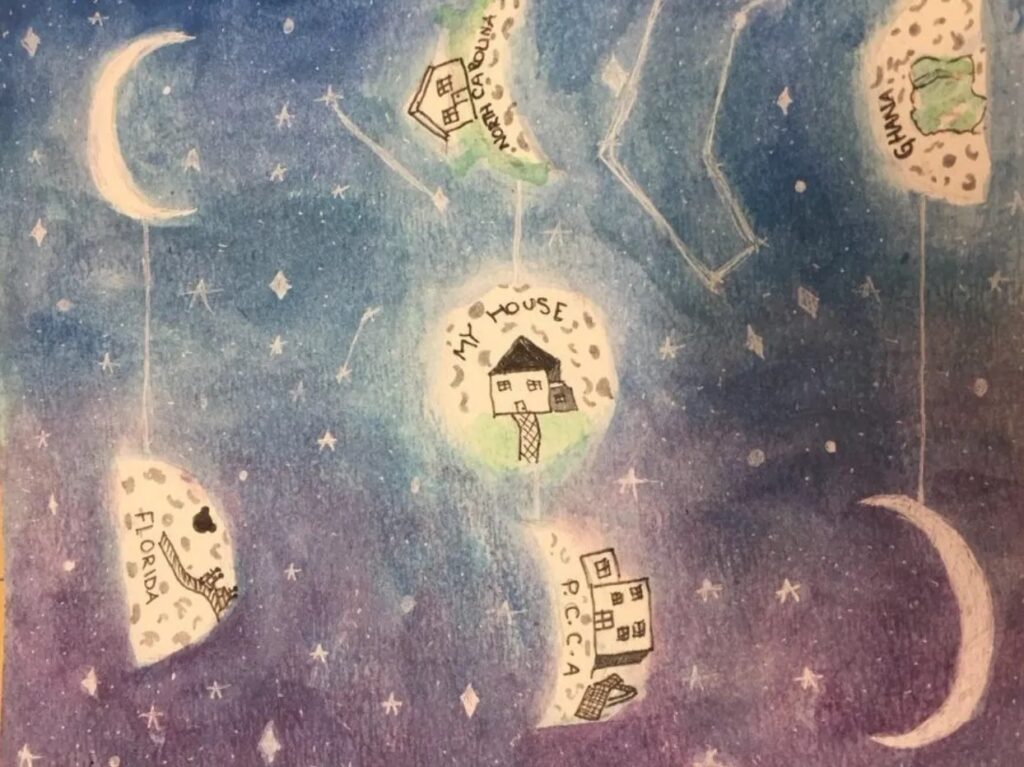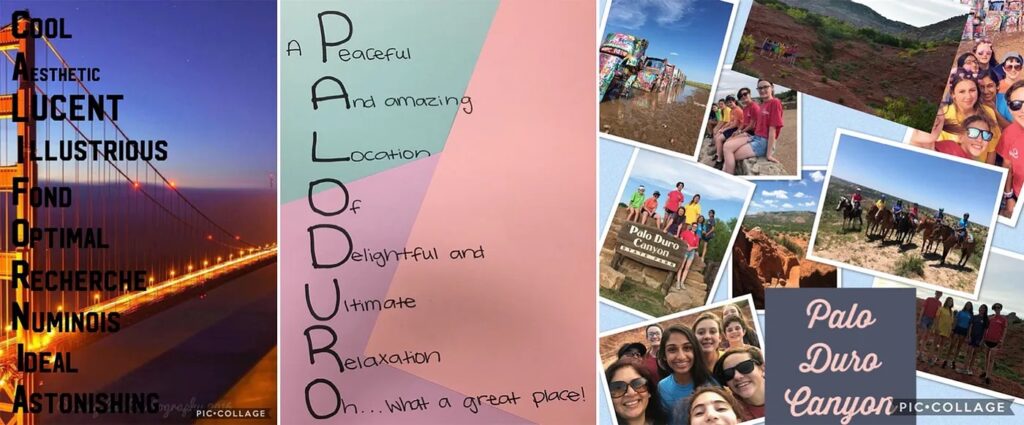Summary:
Ideas for taking the inspiration of place-based writing in the great outdoors, to the imaginative expanse of the great indoors. Originally published during the COVID-19 lockdown of 2020. Originally published on April 21, 2020
#writeout is a free open online collaboration of the National Writing Project and the National Park Service meant to support place-conscious writing and learning.
What happens if instead of going outside to write, we practice what it means to write in together? What if we were explorers of our own spaces and places, curators of our artifacts and archives, writers of our own experiences and histories?
As an act of solidarity and community safety we, members of the #WriteOut team, are encouraging all writers and our families to spend some time writing inside this April during National Poetry Month.
Here are some ideas!
Write a Small Poem
What’s a Small Poem? It is a short poem, like a haiku or couplet or free verse, of just a few lines. Rhymes, optional. What a small poem looks like and sounds like is up to the poet. Give yourself freedom to write and the opportunity to hone your craft.
Some Small Poem ideas:
- Window Poem: Spend a few minutes looking out one of your windows — write a small poem of any format about what you notice
- Sidewalk Talk: Imagine your sidewalk could talk — what would it say, in the form of a small poem?
- Sounds like … Choose a spot in your house. Close your eyes and listen for a few minutes. Write a small poem about the sounds you hear. And remember, even silence has a sound!
- Ode to the Sun: An ode is a formal-sounding poem that indicates respect or love for something. In this case, the ode is about the Sun.
- And more.
Write an Acrostic Poem
Write an acrostic poem about a place that is important to you and add color and/or images to expand your ideas. Here are examples students crafted in Coppell, Texas from October 2019.

Be Inspired by National Parks
Use National Park Service sites and photos to inspire poetry. Research a person, place, or story and write a poem that tells someone else about what you learned. Here you can find Creative Commons photos from National Parks. Also check out the art of words via the National Park Service Literature and Poetry site (also search for Poets).

Poet-tree Haiku
Look out a window and see if you can spot a tree. Spend about 10 minutes jotting downs notes of what you notice about that tree. Write a Haiku about this tree.
For craft suggestions, here’s How to write a Haiku Poem from Wiki-How.
Reasons for the Seasons Poem
Why do seasons change? What happens when they do? Brainstorm some words related to the season changes such as Bloom, Buds, Flowers, Insects, Transition, Growth, <add yours here>. Now construct a seasonal change poem using the words you brainstormed.
This exercise might offer a great opportunity to think about Concept and Clarity. Poet Zakia R. Khwaja, in a blog post about craft, talks about this step of crafting in this way:
At this point I examine my word choices and how they communicate the subject of the poem. Am I clear or obtuse? I remove superfluous words. The idea is to render the poem in the least amount of words possible without compromising the style and subject. It is my advice for any writer: practice an economy of words as much as possible. A good poem is tightly-woven brevity.
Find a Poem in a Map
- Acrostic: Take a map of your favorite national park and make an acrostic poem with it.
- Ekphrastic: Grab a map of your favorite national park. Make a list of words and phrases sparked by looking at the map. Turn that list into a poem.
- Comfort Poem: Make a map of your home. Label the places where you find comfort. Turn those places into a poem.
- Sensory Poem: Make a map of the sights, sounds, smells, tastes, and textures of your home. Turn those into a poem.
All of these ideas suggest the power of word and sound, and offer a great opportunity to get crafty with word choice. Use the maps, the words that are already on them, or the labels you create, to play with words — make lists of words and rearrange them, make groups of words based on meaning, sound, and feeling. Rename places on the map. Choose words for your acrostic by their first letter, obviously, but which words will you choose from the map, and why? You could label the rooms in your home map by their “everyday names” ie. kitchen or you could make up other names based on the room’s color, or purpose, or feeling ie. burnt orange, or center of warmth and yumminess.
You can also download these prompts as a PDF to print or share.

